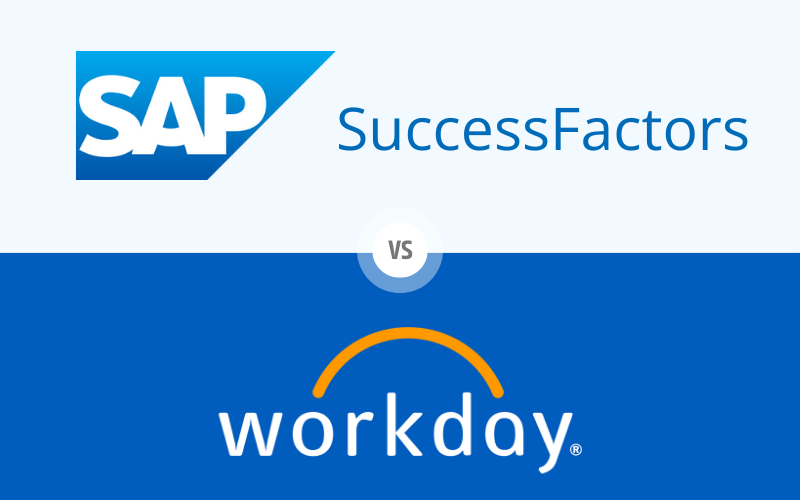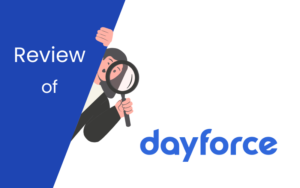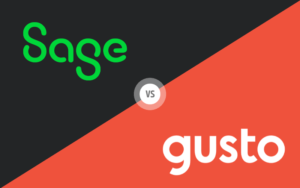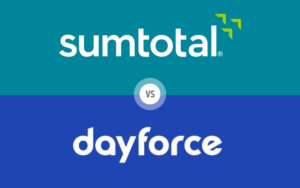When comparing SAP SuccessFactors vs Workday, choosing the right human capital management (HCM) system can significantly impact an organization’s success. This blog post offers a detailed examination of each platform, highlighting how they perform across various critical HR functionalities – from user interface and experience to integration and pricing. We aim to equip you with the necessary insights to see how each solution aligns with your organizational needs and strategic goals. Whether your focus is on optimizing HR operations, enhancing employee engagement, or ensuring global compliance, our guide will assist you in making a well-informed decision.
Table of Contents
User Interface and User Experience
When comparing SAP SuccessFactors vs Workday, understanding the nuances in user interface (UI) and user experience (UX) becomes crucial, as both platforms aim to streamline HR processes but do so with distinctly different design philosophies.

SAP SuccessFactors User Interface and User Experience
SAP SuccessFactors is known for its engaging and functional UI, designed to accommodate users of varying technical skills. The layout emphasizes efficiency and personalization.
Key Features of SAP SuccessFactors UI/UX:
- Customization: Users can configure various aspects of the interface to suit their needs, streamlining daily operations.
- Visual Appeal: The interface combines aesthetic appeal with practicality, offering clear and intuitive navigation through its various modules.
- User-Centric Design: Tools are designed to enhance user engagement and productivity, focusing on reducing complexity and facilitating easier adoption by new users.
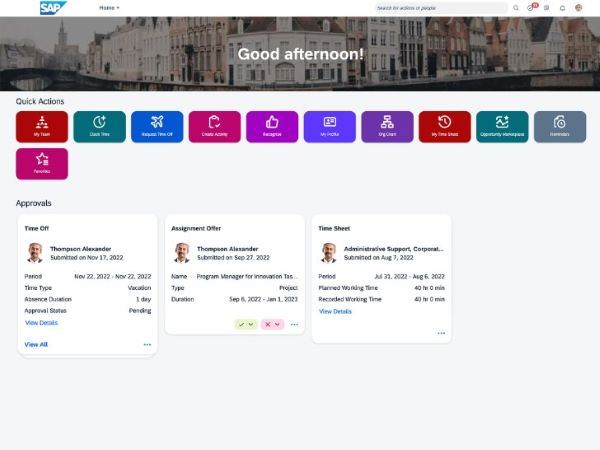
Workday User Interface and User Experience
Workday opts for a minimalistic and highly intuitive UI that focuses on broad accessibility and ease of use, making it especially suitable for fast-paced work environments.
Key Features of Workday UI/UX:
- Simplicity: The platform’s design is straightforward, with a clean aesthetic that avoids overwhelming users with too many options at once.
- Responsive Design: Workday’s interface is optimized for various devices, supporting a seamless transition from desktop to mobile, which is ideal for users on the move.
- Efficient Navigation: Despite its simplicity, the system provides powerful search tools and smart organization of features, ensuring that users spend less time searching for the functions they need.
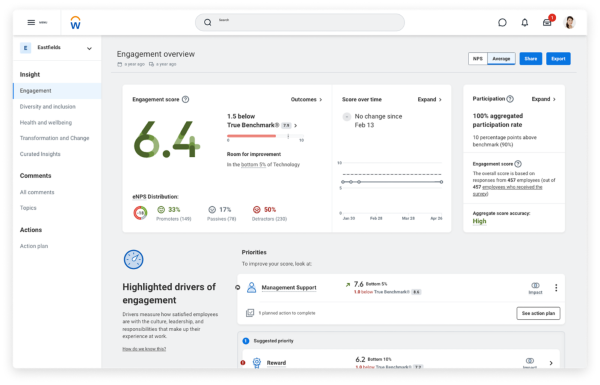
Comparison and Conclusion
The direct comparison of SAP SuccessFactors vs Workday in terms of UI and UX highlights significant differences in approach that cater to diverse organizational needs and user preferences.
SAP SuccessFactors is particularly well-suited for organizations that value customization and a user-centric approach, facilitating a personalized experience that can adapt to the specific workflows of different users. This makes it an excellent choice for enterprises that need a flexible system capable of evolving with their changing HR needs.
Workday, on the other hand, shines in environments that require a straightforward, easy-to-use interface that employees can quickly adopt without extensive training. Its design is optimal for organizations that need consistent performance and accessibility across multiple devices, supporting a mobile workforce.
Ultimately, the decision between SAP SuccessFactors and Workday will hinge on the specific needs of your organization and the premium it places on either customization and user-specific tailoring or simplicity and cross-platform consistency. This understanding will guide enterprises in choosing the platform that best aligns with their operational goals and user expectations.
Core HR Functions
A comprehensive comparison of SAP SuccessFactors vs Workday in the domain of core HR functions is essential for organizations deciding on a system that best supports their human resources management.

SAP SuccessFactors Core HR Functions
SAP SuccessFactors offers a robust suite of core HR capabilities designed to support global businesses with complex needs:
Key Features of SAP SuccessFactors Core HR Functions:
- Global Compliance: SuccessFactors provides extensive features that support compliance with employment and labor laws across different countries, including multiple language capabilities in its payroll, recruiting, and benefits administration modules.
- Organizational Management: While not explicitly mentioned in our sources, SuccessFactors is known for its tools for organizational charting and detailed reports that help manage various business units effectively.
- Employee Central: At the heart of its core HR capabilities, Employee Central allows for comprehensive management of employee data, payroll, benefits, and time tracking.
- Pre-built Features: SuccessFactors offers a wide range of pre-built features and modules, providing out-of-the-box functionality for various HR processes.
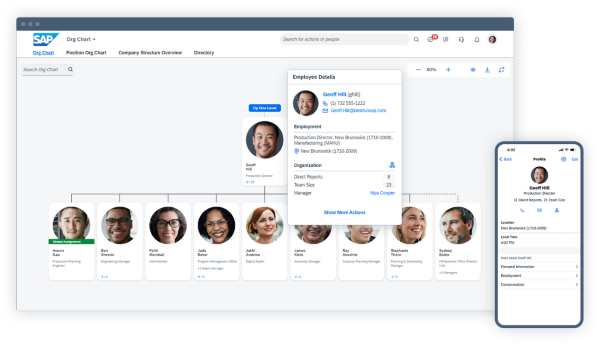
Workday Core HR Functions
Workday offers a highly intuitive and unified approach to core HR functions, focusing on ease of use and integration:
Key Features of Workday Core HR Functions:
- Unified HR Record: Workday maintains a single HR record per employee, simplifying data management and ensuring consistency across all HR processes.
- Modern Interface: Workday is known for its more modern and streamlined interface, making it user-friendly and easy to navigate.
- Comprehensive Reporting: With real-time analytics and reporting capabilities, Workday enables HR professionals to make data-driven decisions quickly and efficiently.
- Configurability: Workday offers a high degree of configurability, allowing organizations to adapt the system to their specific needs without extensive customization.
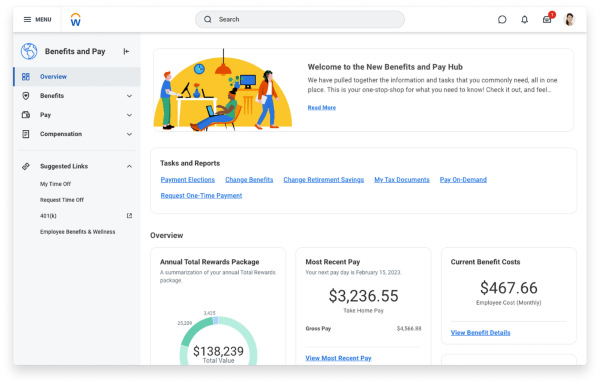
Comparison and Conclusion
Both SAP SuccessFactors and Workday offer comprehensive core HR functions, including document retention and benefits administration, but they cater to slightly different needs and organizational contexts.
SAP SuccessFactors is particularly strong in scenarios that require robust compliance support for global operations. Its multiple language capabilities and pre-built features make it well-suited for large enterprises that need to manage diverse and geographically dispersed workforces.
Workday, meanwhile, is ideal for organizations that prioritize a unified HR system with a modern, streamlined interface. Its configurability and strong analytics capabilities make it a good fit for rapidly growing businesses and those looking for an easily adaptable system.
Choosing between SAP SuccessFactors and Workday will largely depend on your organization’s size, complexity, and specific HR management challenges. Consider factors such as global compliance needs, desired level of pre-built functionality versus configurability, and the importance of a modern user interface when making your decision. Both systems aim to streamline core human resource tasks, but their approaches and strengths differ, allowing you to select the solution that best aligns with your strategic HR objectives and operational needs.
Payroll Management
Exploring the payroll management capabilities of SAP SuccessFactors vs Workday is crucial for organizations looking to streamline this fundamental aspect of HR functions.

SAP SuccessFactors Payroll Management
SAP SuccessFactors offers a comprehensive payroll solution that integrates seamlessly with its HR suite, ensuring consistency across all data and processes:
Key Features of SAP SuccessFactors Payroll Management:
- Global Payroll Capabilities: Designed to handle complex, multi-country payroll operations, SAP SuccessFactors supports local compliance across various jurisdictions, making it ideal for multinational organizations. It offers native embedded payroll support for over 48 countries.
- Integrated Data Management: As part of the SuccessFactors suite, the payroll module fully integrates with other HR functions, reducing errors and duplication of efforts.
- Intelligent Payroll Reporting: The platform provides intelligent payroll reporting capabilities, contributing to more precise and effective payroll management.
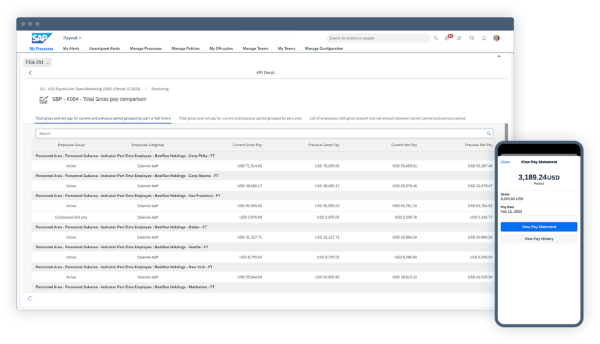
Workday Payroll Management
Workday provides a robust payroll management system that emphasizes user-friendliness and flexibility, tailored to adapt to both domestic and international needs:
Key Features of Workday Payroll Management:
- User-Friendly Interface: Workday is known for its user-friendly analytics and reports, making payroll management more accessible and intuitive.
- Employee Empowerment: Workday emphasizes offering tools and direction for employees to maintain control of their pay, potentially reducing administrative workload.
- ACA Compliance: Workday offers full ACA compliance help included in its payroll management system.
- Intelligent Payroll Reporting: Like SAP SuccessFactors, Workday also provides intelligent payroll reporting capabilities for effective payroll management.
Comparison and Conclusion
When it comes to payroll management, both SAP SuccessFactors and Workday offer powerful tools that can cater to a wide array of organizational needs.
SAP SuccessFactors stands out for organizations that operate on a global scale, needing robust support for various international pay regulations. Its native embedded payroll support for over 48 countries makes it particularly suitable for multinational corporations with complex payroll needs across multiple countries.
Workday, on the other hand, shines in its user-friendly design and emphasis on employee empowerment. However, its global payroll capabilities are more limited, currently supporting only the U.S., U.K., France, and Canada. Workday’s inclusion of full ACA compliance support is a notable advantage for U.S.-based companies.
Selecting between SAP SuccessFactors and Workday for your payroll management needs will depend on the specific requirements of your organization, such as the geographical diversity of your workforce, the importance of user-friendly interfaces, and specific compliance needs like ACA. Both systems offer intelligent payroll reporting capabilities, contributing to more precise and effective payroll management.
This comparison should help inform your decision, aligning with your strategic goals and operational efficiency. Consider factors such as the scale of your global operations, the need for employee self-service features, and specific compliance requirements when making your choice.
Time and Attendance Tracking
A detailed analysis of SAP SuccessFactors vs Workday in the realm of time and attendance tracking reveals how each platform caters to the crucial task of monitoring employee hours and attendance effectively.

SAP SuccessFactors Time and Attendance Tracking
SAP SuccessFactors offers robust functionality designed to simplify and automate the process of time tracking, suited for businesses with diverse tracking needs:
Key Features of SAP SuccessFactors Time and Attendance Tracking:
- Multiple Time-Tracking Options: SuccessFactors provides various time-tracking options that closely monitor employees’ working hours, catering to different organizational needs.
- Comprehensive Monitoring: The platform offers tools to track and manage employee time effectively, supporting accurate payroll processing and workforce management.
- Integration Capabilities: While not explicitly mentioned in our sources, SuccessFactors is known for its integration with other HR functions, potentially streamlining time and attendance management.
Workday Time and Attendance Tracking
Workday approaches time and attendance tracking with a focus on simplicity and integration, offering features that facilitate easy management of workforce hours:
Key Features of Workday Time and Attendance Tracking:
- Leave Management: Workday’s strength lies in its leave management feature, which integrates seamlessly with other HR functions.
- Overtime Monitoring: The system monitors overtime and sends notifications when overtime is surpassed, ensuring labor costs are kept in check.
- Time Reporting Capabilities: Workday offers time reporting functionalities that contribute to effective workforce management.
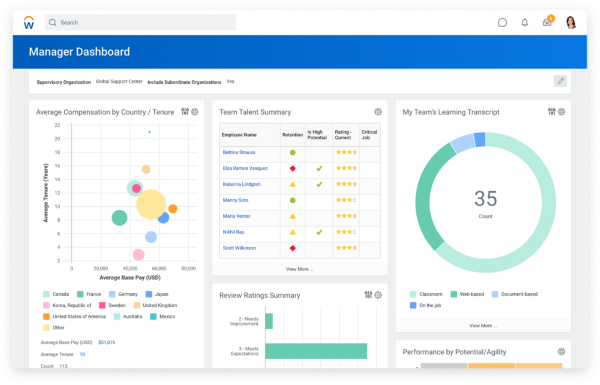
Comparison and Conclusion
Both SAP SuccessFactors and Workday provide effective solutions for time and attendance tracking, yet they cater to slightly different organizational needs.
SAP SuccessFactors is particularly beneficial for organizations requiring multiple time-tracking options. Its comprehensive tools support detailed time tracking, necessary for diverse workforce management needs.
Workday, meanwhile, is ideal for organizations that prioritize leave management and overtime control. Its integrated approach ensures that time and attendance data seamlessly connects with other HR functions, particularly useful for managing labor costs.
Choosing between SAP SuccessFactors and Workday for time and attendance tracking depends on your organization’s specific needs. Consider factors such as the variety of time-tracking options required, the importance of leave management, and the need for overtime monitoring. Both systems offer time reporting capabilities, but their specific strengths may align differently with your operational requirements.
It’s worth noting that both platforms provide intelligent payroll reporting capabilities, which can contribute to more precise and effective payroll management in relation to time and attendance data.
This analysis should guide you in selecting the system that aligns best with your operational requirements and strategic HR objectives. For a more comprehensive understanding, it’s recommended to request detailed demos from both providers to see how their time and attendance tracking features work in practice.
Benefits Administration
In the evaluation of SAP SuccessFactors vs Workday for benefits administration, it’s essential to understand how each platform manages the complex aspects of employee benefits programs efficiently and effectively.

SAP SuccessFactors Benefits Administration
SAP SuccessFactors delivers a robust benefits administration module designed to accommodate the diverse needs of global workforces:
Key Features of SAP SuccessFactors Benefits Administration:
- Global Benefits Management: The platform supports benefits administration across multiple countries with language capabilities in its benefits administration modules, making it suitable for international teams.
- Comprehensive Benefits Offerings: SAP SuccessFactors provides fully supported benefits statements, including benefits management offerings, COBRA administration, and benefits plan recommendations tailored to the needs of each beneficiary.
- Employee Self-Guided Enrollment: The system offers employee self-guided enrollment, allowing employees to take control of their benefit offerings.
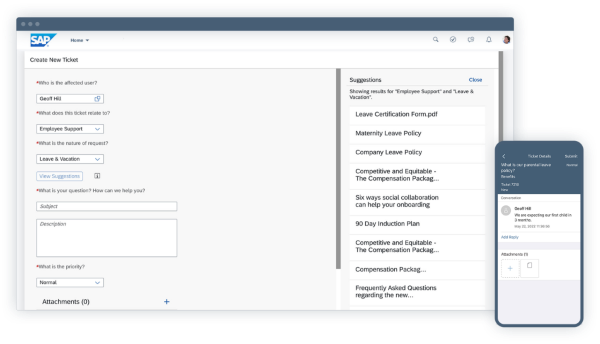
Workday Benefits Administration
Workday provides a user-friendly and integrated approach to benefits administration, ensuring that benefits management is both accessible and comprehensive:
Key Features of Workday Benefits Administration:
- Unified Benefits Platform: Workday’s benefits module is integrated with its core HR functions, including document retention and benefits administration.
- Employee Self-Service: Employees can easily access their consolidated benefits statements to review them whenever and wherever they’re needed.
- ACA Compliance: Workday includes full ACA compliance help as part of its benefits administration system.
- Automated Processes: The platform offers automated evidence of insurability with updated payroll deductions.
Comparison and Conclusion
The benefits administration capabilities of SAP SuccessFactors and Workday are designed to streamline the complex processes associated with managing employee benefits.
SAP SuccessFactors excels in environments that require robust global benefits management with multiple language support. Its comprehensive offerings, including COBRA administration and tailored benefits plan recommendations, make it particularly suited for organizations with diverse benefits needs.
Workday, on the other hand, stands out for its integrated approach and ease of use. Its benefits administration is straightforward, offering features that empower employees through self-service options. The inclusion of full ACA compliance help is a notable advantage for U.S.-based companies.
Both systems provide similar experiences for companies and employees wanting to take control of their benefit offerings through self-guided enrollment. However, it’s worth noting that while Workday offers automated evidence of insurability with updated payroll deductions, it may lack comprehensive support for benefits analytics, potentially requiring workarounds for access.
Choosing between SAP SuccessFactors and Workday for managing benefits will largely depend on the scale of your operations, the diversity of your workforce, and the complexity of your benefits needs. Consider factors such as global language requirements, the need for COBRA administration, ACA compliance support, and the importance of integrated benefits analytics when making your decision.
This side-by-side comparison should help guide your decision towards the platform that best suits your organizational goals and employee expectations. For a more comprehensive understanding, it’s recommended to request detailed demos from both providers to see how their benefits administration features work in practice.
Performance Management
In the competitive landscape of human capital management systems, understanding how SAP SuccessFactors vs Workday handle performance management can greatly influence an organization’s decision to choose the right tool for fostering employee growth and achieving strategic objectives.

SAP SuccessFactors Performance Management
SAP SuccessFactors offers a comprehensive performance management system that emphasizes mobile accessibility and on-the-go learning:
Key Features of SAP SuccessFactors Performance Management:
- Mobile-First Approach: SAP SuccessFactors emphasizes on-the-go goal completion and learning through its mobile app, enabling employees to engage with performance management activities anytime, anywhere.
- Goal Management: The platform allows for setting and tracking goals, aligning individual objectives with broader organizational strategies.
- Continuous Learning: By integrating learning with performance management, SAP SuccessFactors supports ongoing employee development.
Workday Performance Management
Workday integrates performance management within its broader HR ecosystem, focusing on data-driven insights and talent retention:
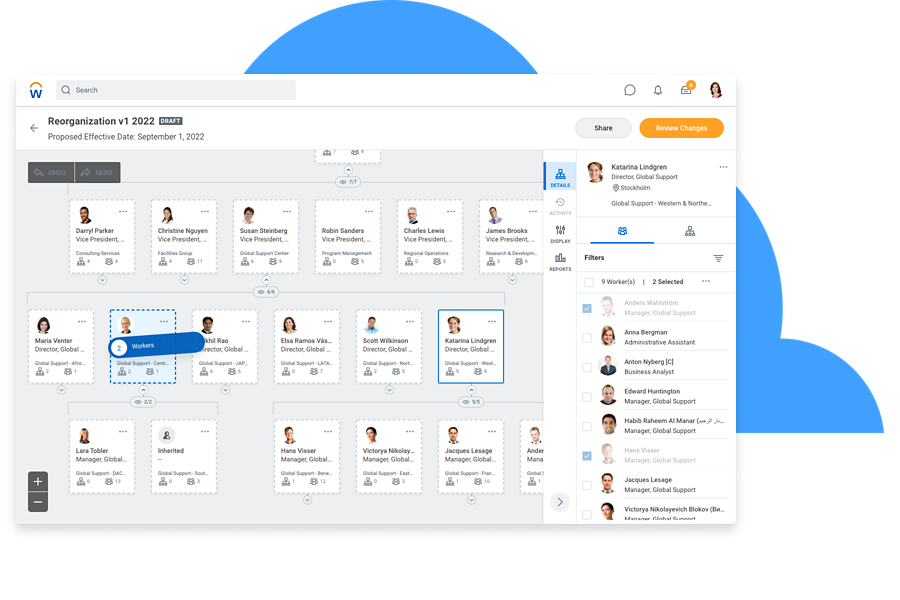
Key Features of Workday Performance Management:
- Analytics and AI Integration: Workday leverages analytics and AI to identify top performers and flight risks, providing valuable insights for talent management.
- Holistic Talent Management: The platform offers a comprehensive approach by connecting performance management with other talent functions.
- Data-Driven Decision Making: By utilizing advanced analytics, Workday enables organizations to make informed decisions about employee performance and development.
Comparison and Conclusion
The performance management systems of SAP SuccessFactors and Workday both offer robust features but cater to different organizational priorities.
SAP SuccessFactors is ideal for organizations that prioritize mobile accessibility and continuous learning as part of their performance management strategy. Its strengths lie in providing tools that enable employees to engage with their performance goals and learning activities on-the-go, which can be particularly beneficial for organizations with a mobile or distributed workforce.
Workday, in contrast, is well-suited for organizations that prefer a data-driven approach to performance management. Its strengths are in its use of analytics and AI to provide insights into employee performance, identify top talent, and predict potential retention issues.
Choosing between SAP SuccessFactors and Workday for performance management will depend on your company’s specific needs and priorities. Consider factors such as:
- The importance of mobile accessibility in your performance management processes
- The need for integrated learning and development features
- The value you place on AI-driven insights and analytics in talent management
- The level of integration desired with other HR processes
Both systems offer performance management capabilities, but their approaches differ significantly. SAP SuccessFactors users have praised its performance management features, although specific details are not provided in our sources.
This analysis should guide you in selecting the platform that best aligns with your strategic HR goals and operational efficiency. For a more comprehensive understanding, it’s recommended to request detailed demos from both providers to see how their performance management features work in practice and how they might fit into your organization’s unique needs and culture.
Talent Management and Recruiting
In the competitive HR software market, understanding how SAP SuccessFactors vs Workday tackle talent management and recruiting is crucial for organizations aiming to attract, develop, and retain top talent effectively.

SAP SuccessFactors Talent Management and Recruiting
SAP SuccessFactors provides a robust suite for talent management and recruiting, designed to streamline the entire talent acquisition and development process:
Key Features of SAP SuccessFactors Talent Management and Recruiting:
- Extensive Recruiting Capabilities: SuccessFactors offers recruiting capabilities in over 80 countries with access to more than 4000 source channels, providing a comprehensive solution for global talent acquisition.
- Mobile Recruiting: The platform provides native mobile apps for Android and iOS, offering added flexibility in the recruiting process.
- Applicant Tracking: SAP SuccessFactors includes robust applicant tracking functionality, enhancing the efficiency of the recruitment process.
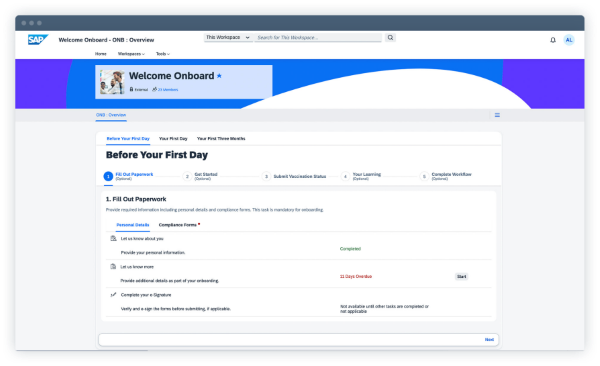
Workday Talent Management and Recruiting
Workday approaches talent management with a focus on integration and internal talent development:
Key Features of Workday Talent Management and Recruiting:
- Internal Talent Development: Workday emphasizes up-skilling and recruiting internal teams to cover workforce skills gaps, promoting talent development within the organization.
- Performance Analytics: The platform leverages analytics and AI to identify top performers and flight risks, providing valuable insights for talent management.
- Integrated Approach: Workday offers a unified system for talent management, integrating it with other HR functions for a cohesive approach.
Comparison and Conclusion
Both SAP SuccessFactors and Workday offer powerful tools for talent management and recruiting, but they cater to different needs and preferences within organizational structures.
SAP SuccessFactors stands out for its extensive global recruiting capabilities and mobile-first approach. Its ability to source candidates from over 4000 channels across 80 countries makes it particularly effective for organizations with diverse and international hiring needs. The addition of native mobile apps for both Android and iOS platforms gives SuccessFactors an edge in mobile recruiting, allowing for greater flexibility in the talent acquisition process.
Workday, on the other hand, excels in its focus on internal talent development and data-driven performance management. Its emphasis on up-skilling and recruiting from within the organization can be particularly beneficial for companies looking to maximize their existing talent pool. The use of analytics and AI to identify top performers and potential flight risks provides valuable insights for strategic talent management.
Choosing between SAP SuccessFactors and Workday for talent management and recruiting depends on your organization’s specific requirements. Consider factors such as:
- The global reach of your recruiting efforts
- The importance of mobile recruiting capabilities
- Your focus on internal talent development versus external hiring
- The need for AI-driven insights in performance management
Both systems offer applicant tracking and recruiting functionality, but their approaches and strengths differ significantly. SAP SuccessFactors may have an advantage for organizations requiring extensive global recruiting capabilities and mobile-first solutions. Workday might be preferable for companies focusing on internal talent development and data-driven performance management.
This analysis should assist you in determining which platform will best support your goals in building and maintaining a high-performing workforce. For a more comprehensive understanding, it’s recommended to request detailed demos from both providers to see how their talent management and recruiting features align with your organization’s specific needs and strategies.
Learning and Development
Analyzing the learning and development (L&D) capabilities of SAP SuccessFactors vs Workday is important for organizations that prioritize employee growth and continuous improvement. While detailed information about their L&D features is limited in our current sources, we can highlight some key aspects based on the available information.

SAP SuccessFactors Learning and Development
SAP SuccessFactors integrates learning into its broader HR suite, with a focus on accessibility and goal alignment:
Key Features of SAP SuccessFactors Learning and Development:
- Mobile Learning: SAP SuccessFactors emphasizes on-the-go goal completion and learning through its mobile app, enabling employees to engage with learning activities anytime, anywhere.
- Goal-Oriented Learning: The platform aligns learning activities with performance goals, supporting a more targeted approach to employee development.
- Integrated Approach: Learning is integrated with other HR functions, potentially allowing for a more cohesive employee development experience.
Workday Learning and Development
Workday approaches learning and development with a focus on internal talent development and addressing skills gaps:
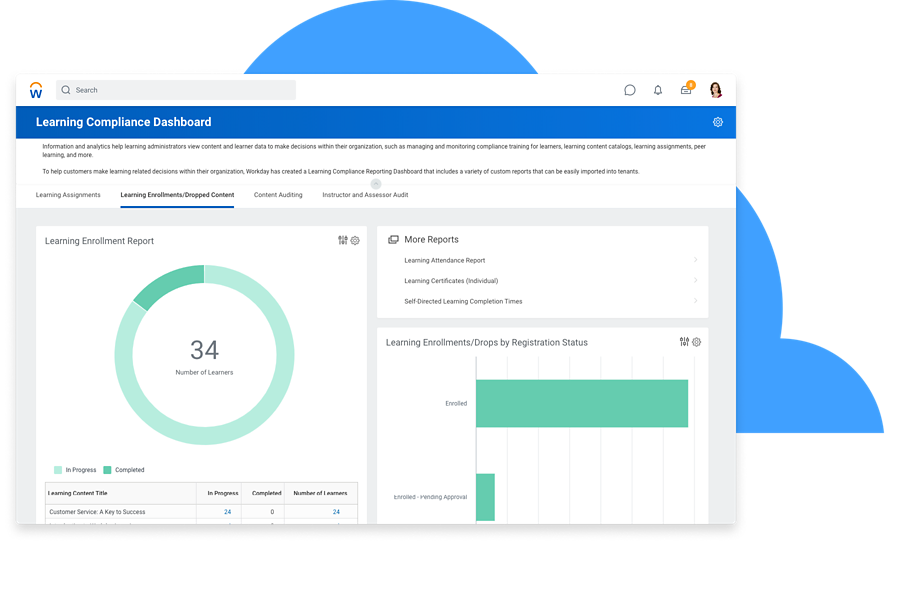
Key Features of Workday Learning and Development:
- Up-skilling Focus: Workday emphasizes up-skilling and recruiting internal teams to cover workforce skills gaps, promoting continuous learning within the organization.
- Integrated Talent Development: Learning is likely integrated with Workday’s broader talent management features, supporting a holistic approach to employee growth.
- Skills-Based Approach: The platform’s focus on addressing skills gaps suggests a targeted approach to learning and development.
Comparison and Conclusion
When comparing the L&D features of SAP SuccessFactors and Workday, both platforms seem to offer learning solutions integrated within their broader HR suites, but with different emphases:
SAP SuccessFactors appears to prioritize mobile accessibility in learning, making it potentially suitable for organizations with distributed or on-the-go workforces. Its alignment of learning with performance goals could be beneficial for companies looking to closely tie development activities to specific performance outcomes.
Workday, on the other hand, seems to focus more on internal talent development and addressing specific skills gaps within the organization. This approach might be particularly valuable for companies looking to maximize their existing talent pool and ensure their workforce skills remain current.
Choosing between SAP SuccessFactors and Workday for your L&D needs will likely depend on your organization’s specific learning priorities. Consider factors such as:
- The importance of mobile learning in your organization
- Your focus on up-skilling existing employees versus bringing in new talent
- How closely you want to align learning activities with performance goals
- The level of integration you need between learning and other HR functions
It’s important to note that this comparison is based on limited information from our current sources. For a more comprehensive understanding of each platform’s L&D capabilities, it would be beneficial to:
- Request detailed demos from both providers
- Seek out case studies or user reviews specifically focused on learning and development features
- Consult with the vendors directly about their most current L&D offerings
This analysis should serve as a starting point in your evaluation, guiding you towards the platform that best aligns with your organization’s learning and development strategy.
Reporting and Analytics
A comparison of reporting and analytics capabilities in SAP SuccessFactors vs Workday is essential for organizations that rely on data-driven decision-making to optimize their human resources strategies. While detailed information about their specific analytics features is limited in our current sources, we can highlight some key aspects based on the available information.

SAP SuccessFactors Reporting and Analytics
SAP SuccessFactors provides analytics tools designed to help organizations measure and improve their HR operations:
Key Features of SAP SuccessFactors Reporting and Analytics:
- Comprehensive Feature Set: SAP SuccessFactors is known for offering a more comprehensive set of features overall, which likely extends to its reporting and analytics capabilities.
- Integrated Approach: As part of a broader HR suite, SuccessFactors likely facilitates the integration of HR data with other business operations.
- Document Management: The platform offers comprehensive document management capabilities, which may support data-driven decision-making processes.
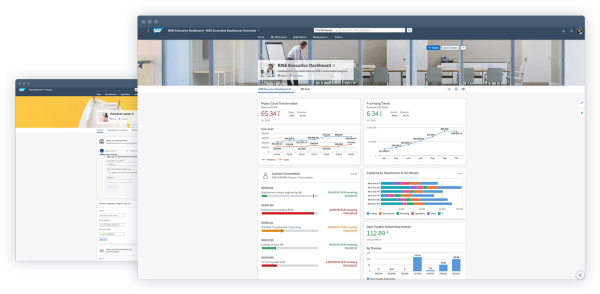
Workday Reporting and Analytics
Workday emphasizes user-friendly analytics that support operational efficiency and strategic planning:
Key Features of Workday Reporting and Analytics:
- User-Friendly Interface: Workday is known for providing user-friendly analytics and reports, making it easy for organizations to strategize for future company endeavors.
- Embedded Analytics: Analytics are likely integrated directly into Workday’s applications, allowing for easy access to data and insights.
- Employee-Centric Tools: Workday emphasizes providing tools for employees to maintain control of their pay, which may extend to accessible analytics for employee-related data.
Comparison and Conclusion
Both SAP SuccessFactors and Workday offer reporting and analytics functionalities, but they may cater to different preferences in data handling and presentation.
SAP SuccessFactors appears to be suited for organizations that require a comprehensive set of features, potentially including more advanced analytical capabilities. Its integrated approach may be beneficial for large enterprises or those with complex data needs.
Workday, on the other hand, seems to prioritize user-friendliness and accessibility in its analytics. This approach could be ideal for organizations that value ease of use and want to ensure that decision-makers at all levels can easily access and interpret data.
When choosing between SAP SuccessFactors and Workday for your reporting and analytics needs, consider:
- The level of analytical complexity your organization requires
- The importance of user-friendly interfaces and accessible reports
- How well the analytics integrate with other HR and business functions
- The specific types of HR data and metrics that are most crucial for your decision-making processes
It’s important to note that this comparison is based on limited information from our current sources. This analysis should serve as a starting point in your evaluation, guiding you towards the platform that best aligns with your organization’s data-driven decision-making processes and overall HR strategy.
Compliance and Security
While specific information about compliance and security features for SAP SuccessFactors and Workday is limited in our current sources, these aspects are crucial for organizations looking to protect sensitive data and ensure adherence to regulatory requirements. The following overview is based on general industry knowledge and the limited information available from our sources. For the most up-to-date and comprehensive information, it’s advisable to consult directly with the vendors.

SAP SuccessFactors Compliance and Security
SAP SuccessFactors offers compliance and security features that cater to global enterprises:
Key Features of SAP SuccessFactors Compliance and Security:
- Global Capabilities: SAP SuccessFactors focuses on global payroll capabilities, which may extend to compliance features for multinational corporations.
- ACA Compliance: While not included by default, SAP SuccessFactors offers ACA compliance tools through an add-on (Benefitfocus).
- Data Protection: As a major enterprise solution, SAP SuccessFactors likely incorporates strong data protection measures, though specific details are not provided in our current sources.
Workday Compliance and Security
Workday emphasizes integrated compliance features within its HR suite:
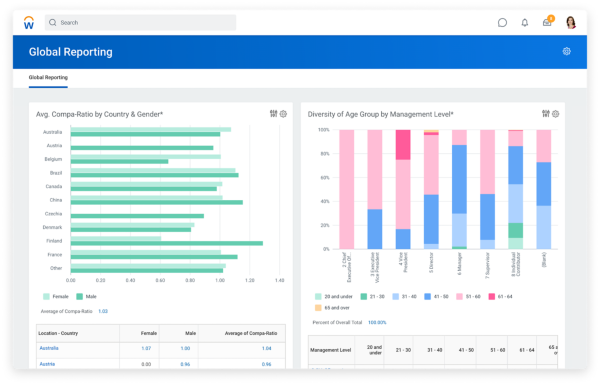
Key Features of Workday Compliance and Security:
- Built-in ACA Compliance: Workday includes full ACA compliance help as part of its standard offering.
- Integrated Approach: As a unified system, Workday likely ensures that compliance and security elements are integrated throughout its processes.
- Data Security: While specific security features are not detailed in our sources, as a leading HR platform, Workday is expected to maintain robust data security measures.
Comparison and Conclusion
Both SAP SuccessFactors and Workday offer compliance and security features, but they may cater to different organizational needs:
SAP SuccessFactors appears to be well-suited for multinational corporations, given its focus on global payroll capabilities. This global approach may extend to its compliance features, potentially making it a good fit for organizations operating across multiple jurisdictions.
Workday, with its included ACA compliance support, might be advantageous for U.S.-based organizations or those prioritizing streamlined ACA compliance. Its integrated approach could be beneficial for companies looking for a unified system with built-in compliance features.
When choosing between SAP SuccessFactors and Workday for compliance and security, consider:
- The geographical scope of your operations and compliance needs
- The importance of built-in ACA compliance tools
- Your organization’s specific regulatory requirements
- The level of integration you need between compliance features and other HR functions
It’s crucial to note that compliance and security features in HR software are continually evolving to meet new regulations and security challenges. This overview should serve as a starting point in your evaluation, guiding you towards further inquiry about the specific compliance and security features that are most critical for your organization.
Integration and Compatibility
Exploring the integration and compatibility features of SAP SuccessFactors vs Workday is essential for organizations that rely on seamless connectivity between various software systems to optimize their HR operations. While specific information about these features is limited in our current sources, we can provide an overview based on available information and general industry knowledge. For the most up-to-date and comprehensive details, it’s advisable to consult directly with the vendors.

SAP SuccessFactors Integration and Compatibility
SAP SuccessFactors offers extensive integration capabilities, designed to function effectively within complex software ecosystems, particularly those centered around SAP products.
Key Features of SAP SuccessFactors Integration and Compatibility:
- Extensive API Offerings: SAP SuccessFactors provides a broad range of APIs that enable custom integration with both SAP and non-SAP systems, facilitating a tailored fit into existing business processes.
- Pre-built Connectors: The platform includes a variety of pre-built connectors for popular third-party solutions, ensuring quick and reliable integration without extensive custom development.
- Compatibility with SAP Ecosystem: As part of the SAP ecosystem, SuccessFactors is especially compatible with other SAP products, enhancing data consistency and process efficiency across the board.
- Integration with Non-SAP Systems: While SAP integration is a strong point, SuccessFactors can also integrate effectively with non-SAP systems, providing flexibility for diverse IT environments.
Workday Integration and Compatibility
Workday emphasizes a unified and user-friendly approach to integration, designed to ensure that all systems communicate effectively with a focus on simplicity and modern architecture.
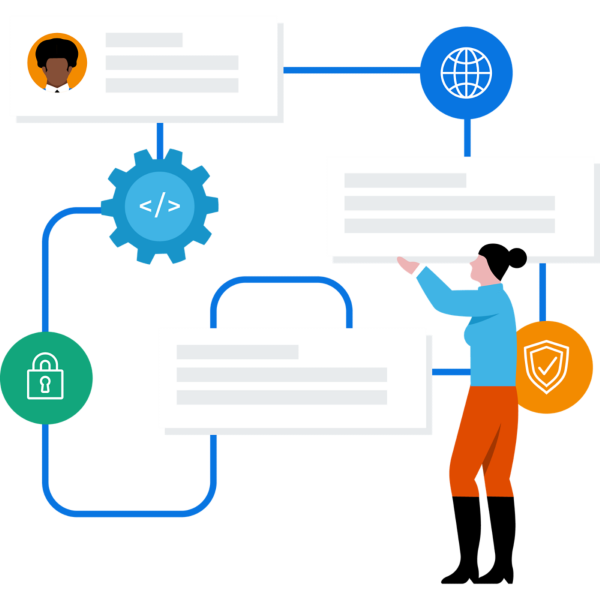
Key Features of Workday Integration and Compatibility:
- Cloud-based Integration: Workday offers built-in integration capabilities that are managed in the cloud, providing a flexible and scalable approach to connecting with other systems.
- Workday Cloud Platform: This platform (formerly known as Workday Integration Cloud Platform) allows users to create, deploy, and manage integrations without needing external middleware, simplifying the integration process and reducing dependency on IT.
- Extensive Partner Ecosystem: Workday collaborates with a wide range of partners to ensure that its customers can easily connect Workday with other leading software solutions, enhancing the platform’s versatility.
- User-Friendly Integration Tools: Workday’s integration capabilities are often praised for their ease of use, making them accessible to a broader range of users within an organization.
Comparison and Conclusion
Both SAP SuccessFactors and Workday provide robust integration and compatibility features, but they cater to different technical environments and integration needs.
SAP SuccessFactors is ideal for organizations that operate within the SAP ecosystem or require extensive custom integration capabilities to accommodate a complex array of business systems. Its API offerings and compatibility with SAP products make it a powerful choice for enterprises needing deep and broad integration, especially in SAP-centric environments. However, it’s worth noting that the integration process can be more complex compared to some alternatives.
Workday, on the other hand, is well-suited for organizations that prefer a more straightforward, less technical approach to integration. Its cloud-based integration tools, comprehensive partner ecosystem, and user-friendly interface make it an excellent option for companies looking for easy-to-manage integrations that support scalability and flexibility. Workday’s modern architecture and emphasis on simplicity are particularly appealing for organizations prioritizing ease of use and streamlined processes.
Choosing between SAP SuccessFactors and Workday for integration and compatibility depends on your organization’s existing technology stack, the level of custom integration required, and the importance of ease of use in managing integrations. Consider factors such as your IT team’s expertise, the complexity of your current systems, and your long-term technology strategy when making your decision.
Customer Support and Service
In the competitive market of HR software, the quality of customer support and service can be a deciding factor. Here’s a focused comparison of SAP SuccessFactors vs Workday in terms of their support offerings, which are essential for smooth operation and user satisfaction.

SAP SuccessFactors Customer Support and Service
SAP SuccessFactors prides itself on providing comprehensive support tailored to meet the diverse needs of its global customer base:
Key Features of SAP SuccessFactors Customer Support and Service:
- Global Support Network: SAP SuccessFactors has a wide-reaching support network that offers assistance across multiple regions, ensuring support is available in various languages and across different time zones.
- Dedicated Support Portals: Customers have access to dedicated online portals where they can submit support tickets, access a rich knowledge base, and engage with community forums for peer advice.
- Training and Resources: SAP offers extensive training programs and resources, including e-learning modules, live training sessions, and user conferences, which help customers maximize the value of their investment.
Workday Customer Support and Service
Workday focuses on providing a high-quality, responsive customer service experience, ensuring that users receive prompt and effective support:
Key Features of Workday Customer Support and Service:
- Personalized Customer Service: Workday assigns a customer service manager to each client, providing a personalized approach to support and ensuring a consistent point of contact for any issues that arise.
- Community and Learning Center: Workday’s customer community offers a collaborative environment where users can share insights, find solutions, and access a vast library of documentation and training materials.
- Proactive Support: Workday also offers proactive support services, where they monitor systems for issues and often resolve them before the customer even becomes aware.
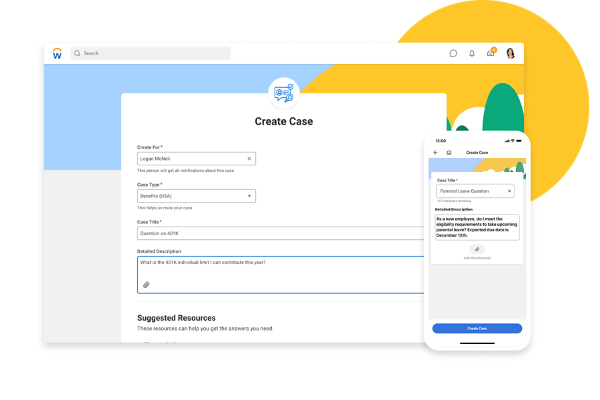
Comparison and Conclusion
The customer support and service approaches of SAP SuccessFactors and Workday reflect their commitment to customer satisfaction but cater to different preferences in service delivery.
SAP SuccessFactors is particularly effective for organizations that operate globally and require a broad support structure that can accommodate a variety of operational scales and complexities. Its comprehensive training and resources are beneficial for users needing in-depth knowledge of complex system functionalities.
Workday, meanwhile, excels in providing a more personalized support experience. Its approach is suited to organizations that value a direct and ongoing relationship with their support team, ensuring quick responses and tailored service.
Choosing between SAP SuccessFactors and Workday for customer support and service will depend largely on your organization’s specific support needs and preferences, whether it’s a need for extensive global support capabilities or a desire for a more personalized customer service approach. This analysis should help guide you in selecting the platform that best aligns with your operational needs and service expectations.
Pricing and Cost-effectiveness
Understanding the pricing structures and overall cost-effectiveness of SAP SuccessFactors vs Workday is crucial for organizations that need to balance their budget with the functionality provided by these advanced HR solutions.

SAP SuccessFactors Pricing and Cost-effectiveness
SAP SuccessFactors offers a flexible pricing model that is typically based on the number of users and the specific modules implemented:
Key Features of SAP SuccessFactors Pricing and Cost-effectiveness:
- Module-Based Pricing: SuccessFactors allows organizations to select and pay for only the modules they need, which can help control costs by tailoring the solution to specific HR functionalities.
- Scalability: The pricing model is designed to scale, making it cost-effective for both small businesses and large enterprises. As the organization grows, additional users and modules can be added without a significant overhaul of the existing contract.
- Long-Term Value: While the initial setup and subscription costs might be higher compared to other systems, the comprehensive features and integrations offered by SuccessFactors often translate to higher long-term value through increased productivity and efficiency.
For more information about pricing, please visit SAP SuccessFactors’ website.
Workday Pricing and Cost-effectiveness
Workday also uses a subscription-based pricing model, which is influenced by the size of the organization and the scope of services used:
Key Features of Workday Pricing and Cost-effectiveness:
- Per-Employee Pricing: Workday’s pricing often revolves around a per-employee per-year metric, which simplifies budgeting for HR costs and aligns expenses with company growth.
- Inclusive Pricing: Most Workday packages include extensive support and updates, which means there are fewer unexpected costs associated with the use of additional support services or software updates.
- ROI and Efficiency: Workday emphasizes its role in improving operational efficiencies, which can justify the investment. Organizations frequently report significant returns on investment through streamlined processes and reduced operational redundancies.
For more information about pricing, please visit Workday’s website.
Comparison and Conclusion
Both SAP SuccessFactors and Workday offer competitive pricing models, but they cater to different budgeting preferences and organizational needs.
SAP SuccessFactors is well-suited for organizations that require a high degree of customization and scalability in their HR solutions. Its module-based pricing allows companies to invest incrementally as their needs evolve, which can be particularly appealing for companies planning significant growth or those with varying operational complexities.
Workday, on the other hand, tends to appeal to organizations that prefer a more predictable pricing model where the cost directly correlates with the size of the workforce. Its inclusive approach to pricing helps companies manage budget expectations and reduce the likelihood of unexpected costs.
Choosing between SAP SuccessFactors and Workday for pricing and cost-effectiveness involves considering the total cost of ownership, including initial setup, scalability, and potential returns through improved efficiencies. This analysis will assist you in selecting the platform that offers the best value based on your organization’s specific financial and operational criteria.
User Reviews and Testimonials
Examining user reviews and testimonials is a valuable way to gauge the real-world effectiveness and user satisfaction of SAP SuccessFactors vs Workday. These insights provide a clearer picture of how these platforms perform under various organizational conditions.

SAP SuccessFactors User Reviews and Testimonials
SAP SuccessFactors generally receives positive feedback for its comprehensive feature set and scalability, but it’s also useful to consider the specific praises and critiques from its user base:
Key Points from SAP SuccessFactors User Reviews and Testimonials:
- Strength in Customization: Many users commend SAP SuccessFactors for its extensive customization options, which allow organizations to tailor the platform to their specific needs.
- Global Capability: The system is often praised for its robust support for global operations, including multilingual and multi-currency features, making it a favorite among multinational corporations.
- Learning Curve: Some users note that while SuccessFactors is powerful, it can have a steep learning curve, especially for those without prior experience in comprehensive HR systems.
Workday User Reviews and Testimonials
Workday tends to be highly rated for its user-friendly interface and integration capabilities, although user experiences can vary based on the specific needs and size of the organization:
Key Points from Workday User Reviews and Testimonials:
- Ease of Use: Workday receives high marks for its intuitive design and user-friendly experience, which help reduce training time and enhance overall user adoption.
- Effective Integration: Users appreciate Workday’s ability to integrate smoothly with other business systems, providing a seamless experience that enhances data consistency and process efficiency.
- Customer Support: There are mixed reviews regarding Workday’s customer support; some users report excellent service, while others suggest there is room for improvement, especially in terms of responsiveness and specialized support.
Comparison and Conclusion
The user reviews and testimonials for SAP SuccessFactors and Workday highlight strengths and areas for improvement in each platform, offering prospective users valuable insights into what they might expect.
SAP SuccessFactors is well-regarded for its adaptability and comprehensive capabilities, suitable for large, complex organizations that need a customizable and robust HR solution. However, potential users should be prepared for the necessary investment in training and development to fully leverage the platform’s capabilities.
Workday is celebrated for its intuitive nature and excellent integration, making it ideal for companies that value a straightforward, cohesive HR system. The focus on user experience and operational efficiency makes Workday a strong candidate for those looking for an effective and engaging HR solution.
Choosing between SAP SuccessFactors and Workday based on user reviews and testimonials will depend on your organization’s priorities—whether they align more with the need for a customizable, extensive toolset or a user-friendly, integrated HR experience. These insights should guide you toward the platform that best fits your organizational culture and HR needs.
Conclusion
Deciding between SAP SuccessFactors vs Workday involves weighing a variety of factors, from the specific HR functionalities offered by each platform to the user experiences they deliver. Throughout this comprehensive comparison, we’ve explored how each system handles critical aspects of HR management, including user interface and experience, core HR functions, payroll management, and more.
SAP SuccessFactors stands out for its extensive customization options, robust global compliance capabilities, and comprehensive suite of HR tools. It offers a more extensive set of features overall and provides broader global payroll support, covering 48+ countries. SAP SuccessFactors is particularly suited for large or multinational companies that require a high degree of scalability and customization to handle complex, diverse HR needs across various geographies.
Workday, on the other hand, shines with its user-friendly design, excellent integration capabilities, and strong focus on providing a unified HR experience. It excels in analytics and reporting, offering user-friendly tools that make data interpretation more accessible. Workday is particularly appealing to mid-to-large businesses looking for an intuitive, cohesive system that can be quickly adopted across the organization without extensive training. Its payroll management is especially strong in specific countries, including the U.S., U.K., France, and Canada.
Both platforms are robust and capable, each with its unique strengths:
- For global enterprises looking to consolidate their HR tech stack and requiring detailed, highly customized HR management systems with extensive global reach, SAP SuccessFactors is often the preferred choice.
- For mid-to-large businesses prioritizing ease of use, seamless integration, strong analytics, and effective management of day-to-day HR tasks within a unified system, Workday tends to be the go-to solution.
Ultimately, the choice between SAP SuccessFactors and Workday will depend on your organization’s specific needs, the scale of its operations, and the strategic goals it aims to achieve with an HCM solution. Whether your priority lies in detailed functionality and global customization or in simplicity, user engagement, and strong analytics, both SAP SuccessFactors and Workday offer compelling features that can significantly enhance your HR capabilities and drive organizational success.
By carefully considering the insights and comparisons outlined in this post, you are better equipped to make an informed decision that aligns with your HR strategy and operational requirements. Remember to consider factors such as the geographical scope of your operations, the importance of advanced analytics in your decision-making processes, and the level of customization your organization requires. This will ensure that you select the HCM system that best fits your organizational needs and supports your long-term HR objectives.
![]()
![]() Read our full SAP SuccessFactors review
Read our full SAP SuccessFactors review
![]()
![]() Read our full Workday review
Read our full Workday review

